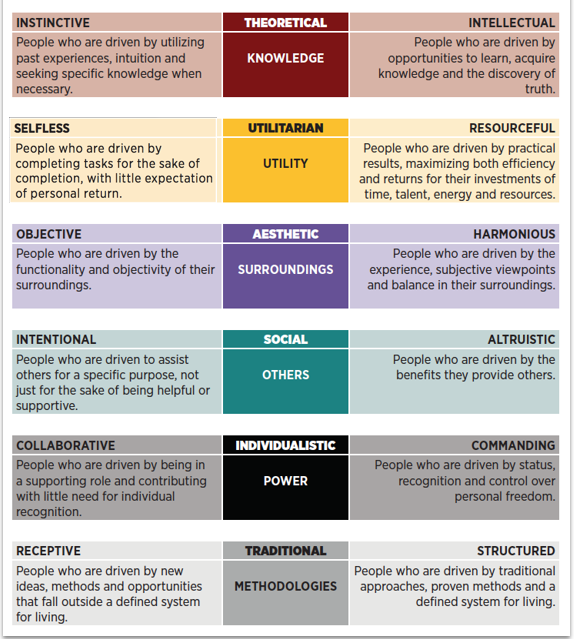
Most primary motivations are core to who we are. The reason we get up in the morning is so much a part of us that if we were asked to explain it, we might struggle for words. We consider it obvious, and we often assume that all humans share the same motivations. But primary motivations differ wildly from person to person.
While our behavioral style answers “how” we tend to do things, our driving forces answer “why” we tend to behave as we do. Driving forces fall into six categories, each of which is a continuum between two polar opposites. Six categories with two distinctly different drivers creates twelve possible driving forces (DF).
TTI Driving Forces

Leadership Skill: Lead by Understanding Driving Forces
Discovering what drives you, and understanding how you differ from others is interesting but the value comes in using this information to communicate with others most effectively, i.e. to speak another’s language.
Let’s say that you wanted to run a marathon, and you were eager to have others join you. When encouraging others to participate, you will tend to lead with the reasons that motivated you to run the race, but not everyone shares your specific driving forces, and some even find them annoying. Shifting your verbiage to accommodate these differences could start out the conversation with these kind of phrases:
Sometimes I am asked if this approach is manipulative. I don’t believe that it is. I think of it as speaking the other person’s language so that you can be understood, just as you would speak in English when addressing an American or German when addressing a German.
How are you doing communicating by using other’s driving forces?
My work with executives and their teams immerses me in the work of effective communication. Meaning, “I know this stuff.” But I find that the key to using it is less about understanding it, and more about mindfulness. Taking a moment to think about who I am talking to, rather than focusing entirely on what I want to convey.
What drives someone is not that hard to see. How do they spend their time? And their money? What do they talk about? What do they ask about? What makes them excited? What makes them furious? Those clues will tell you what drives them.
This blog wraps up my series on Effective Communication. It was a look and the differences in how people tend to behave and why they tend to behave the way they do, and how to adjust your language to be best understood. No one will tell you that it is easy, but everyone will tell you that it works.
Effective communication is the difference between a high-functioning organization and one that struggles. As a company. As a community. As a country. As a world. Take the time to think about who is hearing your words. Make them count.